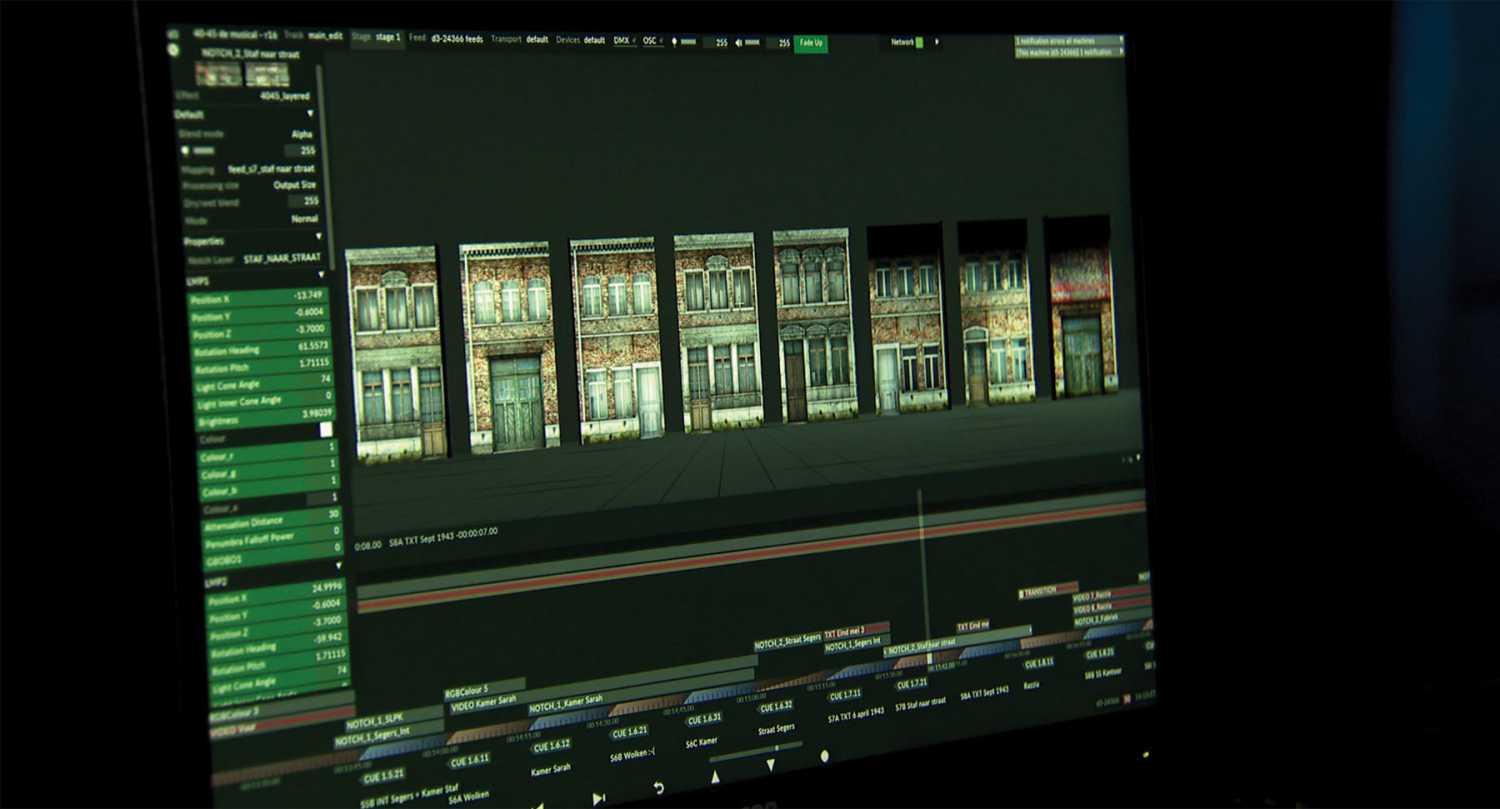Painting with Light introduces Realites
- Details

It enables the lighting designer / programmer to light both the video content – which will already have a pre-determined ambience – and the actors or set around it, using the show lighting console, and without the video content needing to be re-rendered.
This is a flexible solution for video-orientated shows, creating highly realistic effects as the blend between 2D and 3D elements onstage becomes imperceptible.
Additionally, lighting on both the actors and digital backgrounds can be perfectly matched or contrasted to achieve the exact desired effect, bringing a perfect visual harmony to each scene.
The big advantages are the real-time workflow and rendering; an extremely fast production process offering ultimate flexibility for video and scenic content right up until the show / event goes ‘live’ and the expansion of creative possibilities in a show environment.
PWL initially developed the technique for Studio 100’s 40-45 spectacle which launched in 2018. The production is still thrilling audiences at the Pop-Up theatre in Puurs, Belgium.
The ‘virtual lights’ are additional lights to those on the actual physical lighting rig in the theatre or performance space. They are built into a 3D model which is loaded in the video server being used on the show and can be called up / accessed via the lighting desk.
Virtual ‘real lights’ can be assigned and selected, then all the standard parameters - position, pan, tilt, intensity, focus, iris, beam shaping, etc. – accessed and applied for the screen content. They can then be recorded into the same cue which is controlling the real lighting of the set, scenery or people in the scene.
It functions similar to lighting a 3D model in drawing and visualisation software.
Being able to treat the screens in this way is a very efficient way to work during programming, technical and rehearsal periods.
The adaptability means that should video content change for various reasons, re-lighting it is faster and more straightforward.
(Jim Evans)
















